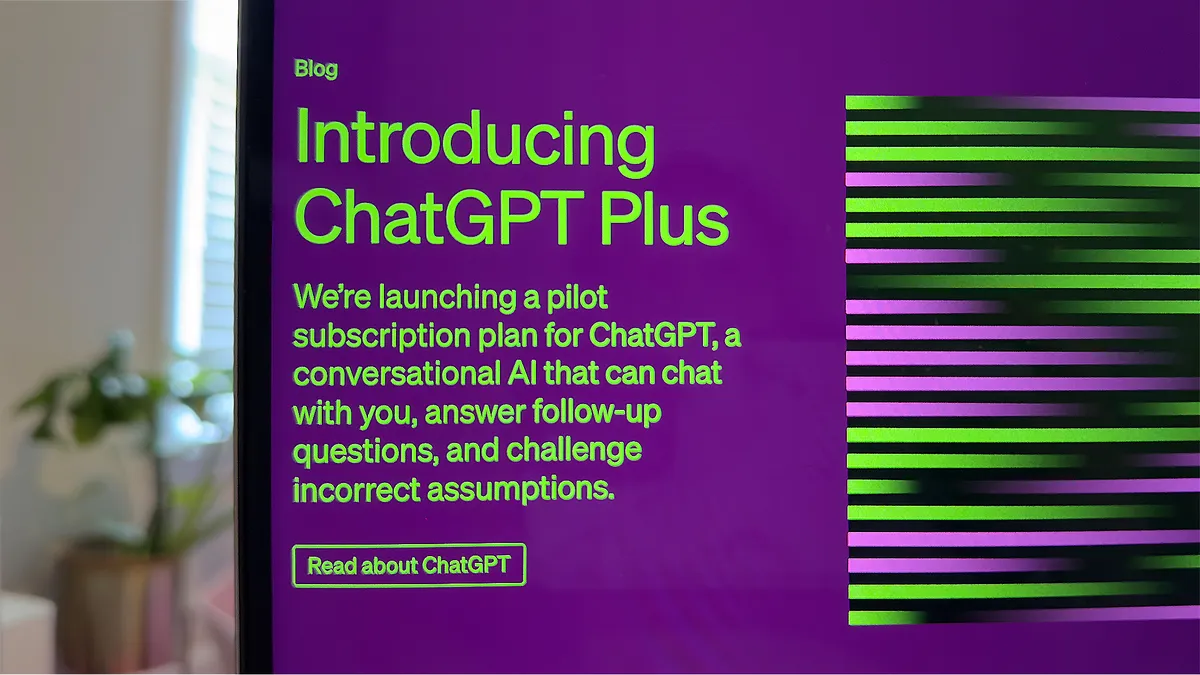The Rise of Generative AI and the Need for Governance
It is time for businesses to begin considering the development of a governance framework for their generative artificial intelligence applications.
As the number of large language models grows, enterprises must adopt AI governance.
📷 Abstract cubes representing AI models
With the rapid growth and diversification of large language models (LLMs) in the market, businesses are now being compelled to establish a robust governance framework to effectively manage their generative artificial intelligence (AI) applications. As more organizations integrate paid and open-source LLMs from third parties, including popular models like OpenAI’s ChatGPT, Anthropic’s Claude, Meta’s Llama, and embedded AI tools such as Salesforce Einstein GPT, it becomes crucial to balance their use with the development of proprietary AI models. This entails leveraging both general-purpose and specialized LLMs to run various AI applications in tandem with key processes, policies, and business rules.
The realization of such a comprehensive approach also necessitates the handling of structured and unstructured data, the latter of which is expected to double as companies adopt generative AI for richer conversational experiences. By incorporating feedback loops and analyzing user response and behavior, businesses can fine-tune their generative AI systems, ensuring both safety and efficiency.
The Need for a Generative AI Application Architecture
To govern the use of generative AI tools and enhance their effectiveness, organizations should develop a generative AI application architecture that enables robust control over data inputs and ensures that system responses align with prescribed rules. This architecture acts as the connective tissue, orchestrating requests into outputs while managing input and output gateways.
However, implementing AI governance is not without its complexities, and businesses might have to exercise patience before tangible results emerge. According to a prediction by Forrester, generative AI’s transformative impact is expected to benefit only 30% of Asia-Pacific firms in the next year. Key challenges surrounding data governance, quality, and infrastructure will need to be addressed to unlock the technology’s full potential.
- Exploring America’s 50 States Through Generative AI
- Singapore Leads Initiative to Develop Multimodal Language Model for...
- Spotting Fake AI News: Can You Tell the Real Deal from the AI-gener...
The Path to Successful Adoption: Plugging the Gaps
To overcome the obstacles associated with generative AI governance, service providers are investing in transforming their operational models and delivering new and improved service offerings. This includes expanding industry partnerships, releasing AI studios and model comparison platforms, and driving pricing and commercial model innovation. Consequently, businesses can look forward to better pricing models that align outcomes with costs, promoting solution-based pricing structures.
Exploring Use Cases and Future Possibilities
Generative AI is primed to bring about a significant shift in various industries, enabling notable advancements in employee productivity, software development and testing, and self-service data and analytics. It is considered the most substantial technological thunderstorm in the past four decades, following previous game-changing developments such as cloud computing, the mobile internet, and personal computers.
As generative AI continues to evolve, it is predicted that “static” websites will eventually become obsolete, replaced by dynamic systems powered by generative AI. Websites will transform into responsive platforms that provide customized and continually updated responses based on user queries, revolutionizing the way information is accessed and rendering conventional search less critical.
The Road Ahead: Assessing Options and Integrations
Although these transformations will unfold gradually, businesses must stay proactive in assessing their options and selecting the most suitable LLM models for their desired outcomes. Additionally, as the generative AI market expands, more enterprises are expected to integrate generative AI capabilities into their existing customer applications at no additional cost.
Furthermore, the true value of generative AI lies not in the LLM layer itself but in its successful integration into software products. Software vendors should seize the opportunity to integrate generative AI features into their offerings, fostering an environment where generative AI becomes an intrinsic part of how employees work. By making the technology more affordable and readily available, businesses can fully exploit its potential.
📷 Forrester’s Predictions Briefing for 2024 📷
To gain a deeper understanding of the implications and potential of generative AI, explore these resources:
- 3 Ways to Secure the Best AI Partner for Your Business – Discover how to select the ideal AI partner for your organization.
- New York Times Wants OpenAI and Microsoft to Pay for Training Data – Explore the ongoing discourse surrounding AI models and training data.
- Yes, Buy That $1000 Roomba Robot Vacuum – Features That Matter – Delve into the key features to consider when purchasing AI-based household appliances.
- Generative AI Will Far Surpass What ChatGPT Can Do. Here’s Everything on How the Tech Advances – Uncover the remarkable advancements fueling the evolution of generative AI.
- New Research Initiative Aims to Build Large Language AI Model in Southeast Asia – Gain insights into the ongoing efforts to develop large language AI models in Southeast Asia.
We hope you found this guide informative and entertaining. Feel free to share it with your friends and colleagues on social media, and keep exploring the exciting world of computer technology and programming!
🤖 Happy coding!






